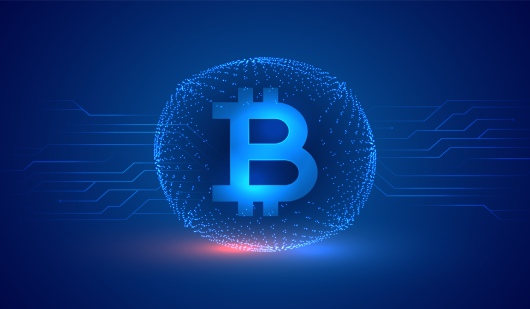-
The Bitcoin world is transforming. In addition to cryptocurrency development, the Ordinals protocol has paved the way for innovative projects to utilize Bitcoin's security and immutability through BRC-20 tokens. This presents a unique opportunity for smart investors and forward-thinking entrepreneurs: the emergence of BRC-20 token launchpad development.
This blog explores the intricacies of BRC-20 launchpads and their essential features. The blog also covers the technical considerations for BRC-20 token development and steps.
BRC-20 Token Launchpad
As a refresher, it is essential to grasp the Ordinals protocol—a protocol that enables data inscription on individual satoshis, the smallest units of Bitcoin. Now, turning our attention to BRC-20 tokens. An anonymous developer domo developed an experimental fungible token - BRC-20. These tokens are essentially Ordinal inscriptions with specific JSON-formatted text.
BRC-20 tokens gained significant attention so platforms like Ordinals marketplaces and decentralized finance (DeFi) applications found the need for BRC-20 token launchpads.
A BRC-20 launchpad serves as a platform enabling new projects within the Bitcoin network to establish a market presence. Operating similarly to traditional launchpads, these platforms primarily adopt the Initial DEX Offering (IDO) model.
Bitcoin-based business projects can utilize BRC-20 launchpads to expand their reach and secure funding through the sale of BRC-20 tokens. Given the nascent nature of the space, with only a few platforms currently available, the BRC-20 launchpad emerges as an enticing business model.
Check It Out | BRC 20 Token | Everything You Need To Know
Features of a BRC-20 Token Launchpad
When it comes to a successful BRC-20 token launchpad development, the right features can make all the difference in attracting projects, investors, and building a thriving community. Here are some key features to consider:
IDO Support
This is a primary function, allowing projects to launch token sales with various distribution mechanisms like Dutch auctions or tiered pools. It enables projects to launch their tokens directly on a decentralized exchange (DEX) built on Bitcoin's Ordinals protocol. It streamlines the fundraising process and provides immediate liquidity for investors.
Token Auction Options
A token auction offers flexible auction formats, including English, Dutch, fixed-price sale, and tiered sale auctions. Multiple token auctions cater to different project needs and investor preferences.
Incubator Portal
An incubator portal in a BRC-20 token launchpad provides end-to-end support for Bitcoin-native projects. From development and fundraising to strategic marketing initiatives, this end-to-end assistance significantly enhances a venture's prospects for successful establishment.
Staking Tiers
A staking tiers feature offers intriguing ways to incentivize user participation and enhance platform engagement. You can encourage users to lock their holdings by offering tiered rewards based on the amount of the platform's native token (or another specific token) staked. These rewards enhance user engagement and participation.
Liquidity Pools
Liquidity pools in a BRC-20 launchpad are collections of funds locked in a smart contract. They enable seamless trading by providing projects with liquidity to their tokens after launch. Additionally, they create a more decentralized and inclusive financial system wherein investors can stake their tokens to offer liquidity in exchange.
Wallet Integration
Wallet integration enables users to connect their existing crypto wallet accounts that support Bitcoin network upgrades, including Taproot, Native SegWit, and more. It gives users a seamless experience and enables them to manage and trade their tokens.
KYC/AML (Know Your Customer/Anti-Money Laundering)
KYC/AML implementation as part of users' onboarding process enables you to verify investor identities and build trust. It ensures regulatory adherence and mitigates legal risks and potential fines.
Suggested Read | BRC-20 Wallet Development | What You Need To Know
BRC-20 Token Launchpad Development
Here is a breakdown of BRC-20 token launchpad development:
Conceptualize your Launchpad
The first step in the BRC-20 token launchpad development is the conceptualization of your launchpad. You need to define your unique value proposition. Additionally, you have to define your target audience - investors, retail traders, institutions, or someone else. Your ideal platform users will help shape the platform's features and functionalities. Then, you need to define the tokenomics of your platform's native token. Another thing is to select a business model for revenue generation.
Backend Development
The next step is backend development which includes building smart contracts for token generation and fundraising mechanisms. Additionally, it involves integration with blockchain APIs and wallet infrastructure. Another essential part of backend development is robust security measure implementation and regulatory compliance.
User Interface (UI) Development
The next step is to design a user-friendly interface to ensure intuitive navigation and functionality for both project owners and investors. It is crucial to make the project details, tokenomics, and investment terms easily accessible. You need to focus on creating a visually appealing and professional interface that reflects your brand identity.
Furthermore, optimize the interface for different screen sizes and devices.
Integrate Essential Features
You can integrate essential features like KYC/AML verification, a tiered participation system, liquidity pools, and more. These features provide various benefits and security to investors.
Testing and Deployment
All the functionalities and smart contracts require rigorous testing to identify and fix potential vulnerabilities. After thorough testing, create awareness to create projects and investors through targeted marketing campaigns. Then, carefully deploy your platform and manage the token launch process for your project.
Explore More | Crypto Launchpad Development | Empowering Token Launching
Conclusion
Oodles Blockchain is your dedicated partner in blockchain development, specializing in seamlessly integrating blockchain solutions into your business processes. Our team of experts can assist you in developing a robust BRC-20 token launchpad, empowering your venture to thrive in the evolving blockchain world. Get in touch with our blockchain developers today to get started.

Our Offices
INDIA
Emaar Digital Greens, Sector 61,
Gurugram, Haryana
122011.
Welldone Tech Park,
Sector 48, Sohna road,
Gurugram, Haryana
122018.















